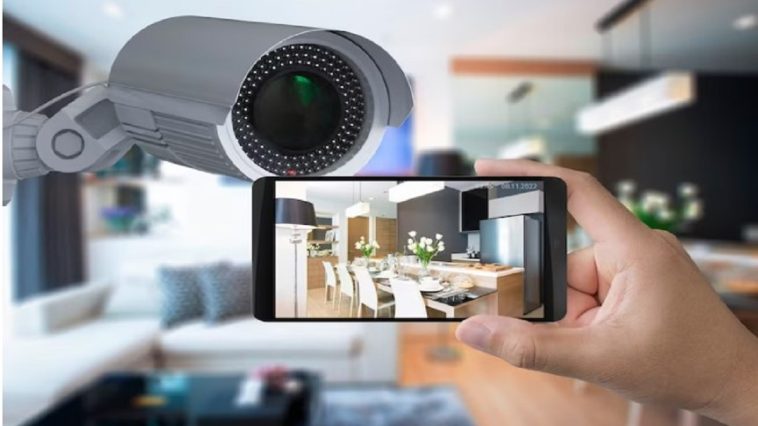When it comes to setting up a reliable and effective CCTV (Closed-Circuit Television) system, selecting the right accessories is just as important as choosing the cameras themselves. Cables, mounts, and other accessories are essential components that ensure your surveillance system functions optimally. In this guide, we will explore the key considerations when choosing the right CCTV accessories to complement your security setup.
1. High-Quality Cables: Ensuring a Strong Connection
Cables are the backbone of your CCTV system, serving as the conduits for transmitting video and power signals from the cameras to the recording equipment. Here’s what you need to keep in mind:
a. Cable Types:
There are two primary cable types used in CCTV systems:
- Coaxial Cables (e.g., RG59): These are commonly used for analog CCTV cameras. RG59 cables are known for their durability and signal transmission capabilities.
- Ethernet Cables (e.g., Cat 5e or Cat 6): Ethernet cables are typically used for IP (Internet Protocol) cameras. They allow for high-speed data transmission and are suitable for digital surveillance systems.
Ensure that you select the cable type that aligns with your camera technology.
b. Cable Length:
Carefully measure the distances between your cameras and the recording device (DVR/NVR). Select cables that are neither too long nor too short, as excessive slack can lead to clutter, while insufficient length can impede your installation.
c. Cable Quality:
Investing in high-quality cables is crucial. Look for cables with proper shielding to minimize signal loss and interference. High-quality cables will contribute to clear and reliable video transmission.
2. Sturdy Camera Mounts: Positioning for Optimal Coverage
Proper camera placement is essential for effective surveillance. Camera mounts help you position cameras correctly. Consider the following:
a. Mount Types:
There are various types of camera mounts available, including:
- Wall Mounts: Ideal for securing cameras to walls, providing a fixed angle for monitoring specific areas.
- Ceiling Mounts: These mounts are designed for suspending cameras from the ceiling, offering versatile positioning options.
- Pole Mounts: Used to mount cameras on poles or vertical surfaces, often seen in outdoor applications.
- Junction Box Mounts: These enclosures protect cameras from harsh weather conditions and are suitable for outdoor use.
Choose the mount type that best suits your installation location and objectives.
b. Material and Durability:
Select mounts made from robust materials such as metal, as they are better equipped to withstand outdoor conditions. Look for corrosion-resistant coatings to extend the lifespan of your mounts, especially if they will be exposed to the elements.
c. Adjustability:
Flexibility in camera positioning is vital. Choose mounts that offer adjustability in terms of angle and orientation. This allows you to fine-tune the camera’s field of view for optimal coverage.
3. Power Supply and Surge Protection: Ensuring Reliable Operation
Power supply and surge protection are essential aspects of maintaining a stable and secure CCTV system.
a. Power Supply Unit (PSU):
Invest in a reliable power supply unit to ensure consistent power for your cameras. Calculate the power requirements of your cameras and select a PSU with sufficient capacity.
b. Surge Protection:
Install surge protectors to safeguard your CCTV system from power surges and voltage spikes. These protectors can prevent equipment damage during electrical storms or sudden power fluctuations.
4. Weatherproof Housing: Protecting Cameras in Outdoor Environments
If you plan to install cameras outdoors, weatherproof housing is a must. Consider the following:
a. IP Rating:
Check the IP (Ingress Protection) rating of the housing. A higher IP rating indicates better protection against environmental factors such as rain, snow, dust, and extreme temperatures. Select a housing that matches the weather conditions in your location.
b. Heating and Cooling:
In regions with extreme temperatures, opt for housings equipped with heating or cooling elements. These components help maintain optimal operating conditions for your cameras, ensuring they function reliably in all weather conditions.
5. Cable Management Accessories: Organizing Your Installation
Proper cable management not only keeps your installation neat and organized but also protects cables from environmental hazards.
a. Cable Clips and Ties:
Use cable clips and ties to secure cables to walls, ceilings, or other surfaces. This prevents cables from hanging loosely and minimizes the risk of accidental damage.
b. Conduit and Junction Boxes:
Install conduit and junction boxes to encase and protect cables from environmental factors and tampering. These accessories are essential for outdoor installations.
In conclusion, choosing the right CCTV accessories is integral to ensuring the effectiveness and longevity of your surveillance system. Pay close attention to cable quality, camera mounts, power supply, surge protection, weatherproofing, and cable management. These seemingly small details can have a significant impact on the performance and reliability of your CCTV system.




